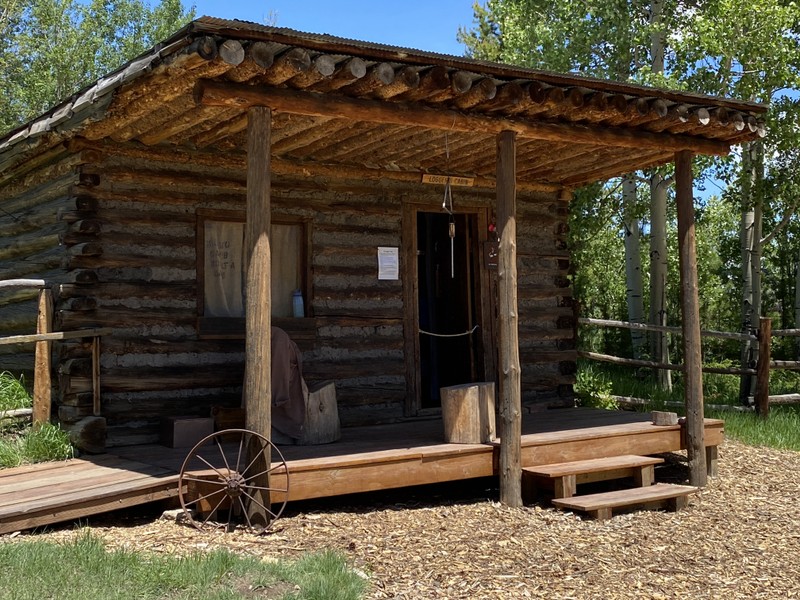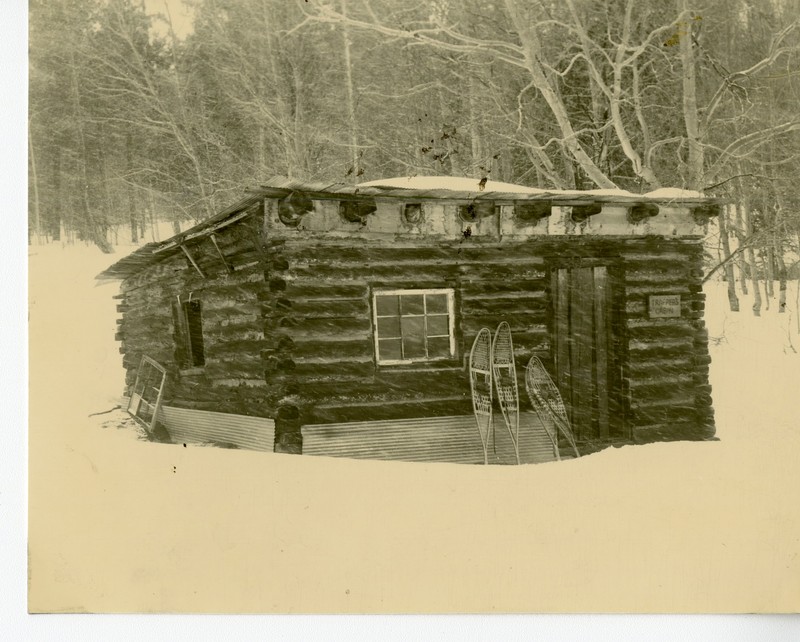Rowley Homestead Logger's Cabin
Introduction
Text-to-speech Audio
The Logger’s Cabin, now located at the Rowley Homestead, was moved from another part of the YMCA property. It was built in the 1940s. Its simple design and construction suggest that it was not meant to be a permanent structure. Up to 5 loggers might have sheltered in this cabin during their 6 to 8-week stints logging in the forests. The cabin was moved to the homestead in the 1980s by YMCA of the Rockies. The porch was added at that time as the cabin is used as a storage area for the Homestead staff. It is the only building not original to the Rowley Homestead.
Images
The Logger’s Cabin at the Rowley Homestead today.

The Logger’s Cabin prior to the porch addition and move to the Homestead site.

Backstory and Context
Text-to-speech Audio
Although the Logger’s Cabin is not original to the Rowley Homestead location, this building represents the history of the area and of the Snow Mountain Ranch property. Logging in this area began in the late nineteenth century and supported many other industries, including mining during the 1870s-1880s, local construction projects, a box making plant in Granby, and the westward expansion of the railroad. Today reforestation hides the scars of many years of intense logging in Middle Park.
Built in the 1940s this one-room cabin is emblematic of the temporary shelters loggers constructed in this area of Colorado. Loggers often worked 10-12-hour days and used cabins like this one to sleep in and shelter from bad weather such as blizzards or thunderstorms. Loggers often moved to new areas and built new cabins as trees were cut down.
Logging was a difficult and dangerous task. Several loggers in the Middle Park area suffered severe injuries while many more likely dealt with scrapes, splinters, and cuts on a daily basis. In Tabernash, Frank Speed, a young logger, shattered both his legs after a tree fell on him. Dr. Susie Anderson, a famed doctor in Middle Park during the early twentieth century, was often called out to logging camps for various injuries and illnesses. Many of the loggers in this area were Scandinavian immigrants when Anderson was here, but the lumbering workforce was diverse. In other parts of the West, Chinese immigrants made up a large portion of the logging labor force.
The YMCA of the Rockies property at Snow Mountain Ranch covers over 5,000 acres, including hundreds of acres of forest. The Y purchased two logging locations – Blue Ridge and Nine Mile Mountain. Early staff members remember the road running through the YMCA campus being continually used by trucks hauling logs from the mountainside. Logging still takes place in this area today, but the industry is much smaller than the mid-twentieth century. New environmental regulations and shrinking demand is changing the logging industry and forcing counties and states to reevaluate their reliance on the logging industry.
Sources
Fay, Abbot. Logging, Grand County History Stories. Accessed August 20th, 2022. https://stories.grandcountyhistory.org/article/logging.
Noel, Thomas J.. Grand County, Society of Architectural Historians. Accessed August 20th, 2022. https://sah-archipedia.org/essays/CO-01-0004-0001.
Wuerthner, George. Why is logging dying? Blame the market.. High Country News. June 15th, 2016.
Cornell, Virginia. Doc Susie: The True Story of a Country Physician in the Colorado Rockies. Carpentiria, California. Manifest Publications, 1991.
"Little Colorado Items: Happenings all over the state worth while." The Colorado Statesman (Denver) September 7th, 1912, 2.
Archives of YMCA of the Rockies, Snow Mountain Ranch Collection, Rowley Homestead folders.
